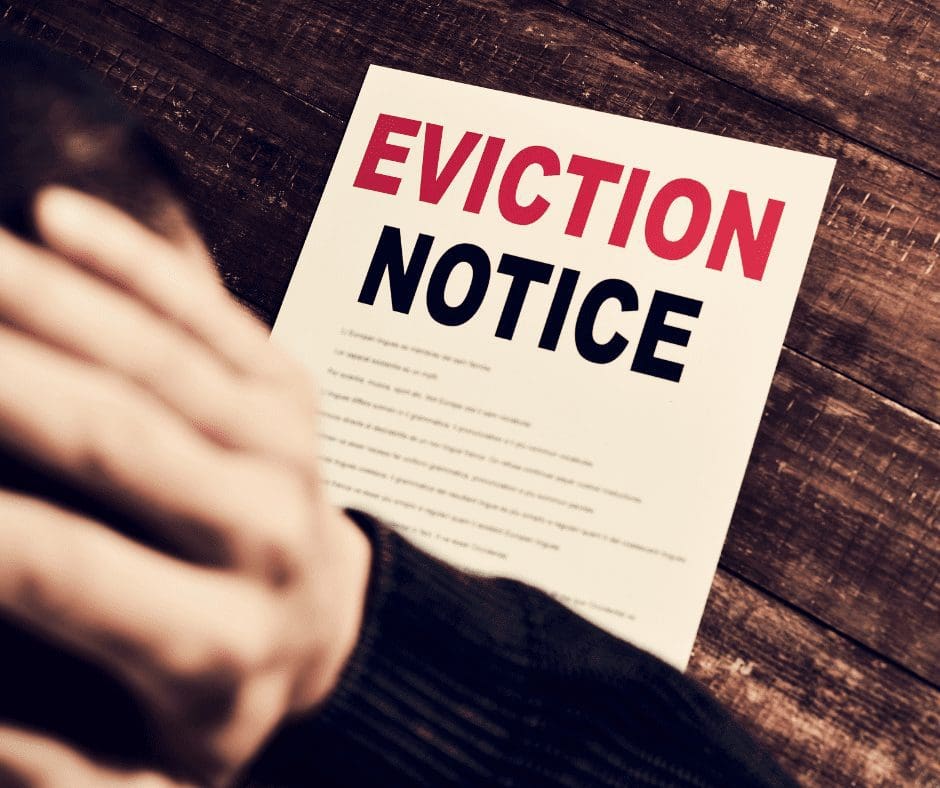
The Eviction Process in Costa Rica
(Versión en Español a continuación)
With a substantial number of rental properties in Costa Rica, it is important for property owners who rent their properties out to be aware of the “Leasehold Abbreviated Procedure” (Law 9160), which addresses evictions, the related legal process, and how it is backed up by the courts. This law is aimed at providing protection to all rental property owners.
The Civil Courts, where the leased property is located, maintain jurisdiction over the civil process of an eviction. The parties are: the owner, lessor, possessor in lawful title suing the lessee, subtenant, or transferee (Article 5).
Claims can be processed in two specific scenarios:
a) Expiration of the contract term (express statement of not renewing the contract).
b) Non-payment of rent, public services or the HOA condo fees (Article 1).
 The lawsuit must contain the following (Article 3):
The lawsuit must contain the following (Article 3):
- Succinct statement of the facts
- Fundamental laws
- Rent amount and due date of payment
- Grounds, or legal reason — only expiration of the term of the contract or non-payment of rent (public services or condo fees) are allowed
- Details and any available proof of where the property is located
There are several steps involved in the eviction process.
Step 1: Verification of the lease
The lease must be established by, but without limiting to, the contract, previous judicial resolutions, if any, that establish it, rental payment receipts, related confessions, letters or emails between the parties, or any written document where the relationship between the plaintiff/ lessor and the defendant/lessee is established. Documented proof is always required (Article 3).
¨However, in the absence of a written contract, such a link can be established by using other types of associated documentation, such as rental payment receipts, letters, emails, etc.…¨.
Step 2: Errors in the lawsuit
The judge will order that any errors in the lawsuit be rectified within a non-extendable period of five business days (Article 4).
Step 3: Initial resolution
Once the lawsuit is submitted, the judge will order the eviction in the initial resolution (Article 6). The judge will order the defendant/lessee to continue depositing rents due after the eviction order, and will face immediate eviction in the case of non-compliance. When the return of the property is ordered due to non-payment of subsequent rents, the eviction process will be terminated, and the defendant/lessee will be ordered to pay court fees and expenses.
Step 4: Deadline for opposition and exceptions
The defendant/lessee will be given a period of 15 days to either comply or appeal against the eviction (Article 6).
Step 5: In case of acceptance
If the defendant/lessee accepts the charges, does not appeal them within the 15-day term, or fails to make any of the lease rent deposits, the appeal will be deemed null and void and the resolution will be executed.
Step 6: In case of appeal being upheld
If an appeal by the defendant/lessee is upheld, the judge, within a period of 15 calendar days from the date the appeal is presented, will hold an oral hearing governed by the provisions of articles 4 and 5.5 of No. 8624, Judicial Collection Law, and the effects of the initial resolution will be suspended.
Step 7: Sentence
Once the oral hearing has concluded, the sentence will determine whether the initial resolution is confirmed or revoked. If it is confirmed, the next step will be to proceed with the repossession of the property. If it is dismissed, the lawsuit is rejected and any agreed-upon act of execution or precautionary measure will be revoked.
However, the plaintiff/lessor may request, within eight business days from said dismissal, that the process will be converted to an Ordinary Declarative Procedure. Once the Court process conversion is admitted, the preventive measures obtained will be preserved, if a guarantee “caucion” has been granted. All the proofs previously carried out will remain valid.
Step 8: Repossession
Once the sentence is signed, without further processing, the plaintiff/lessor will be granted repossession of the property through the administrative authority (Police Authority), with application of the provisions regarding the execution of the sentence.
Step 9: Collection of fees and right of retention
Once the judgment ruling in favor of the eviction has been declared final, the plaintiff/lessor may require that the defendant/lessee be ordered to pay the unsatisfied rental fees and services and other expenses inherent to the lease that the defendant/lessee would not have covered.
To guarantee payment, from the beginning of the Incidental Procedure, the plaintiff/lessor may request that an inventory of goods be made in the leased property. Based on this, he will indicate which of the defendant/lessee’s items should be kept in place as collateral. If the obligation is not satisfied, the plaintiff/lessor may exercise the right of retention of the goods, in accordance with the provisions of the Urban and Suburban Leasing Law and the Civil Code.
Due to the complexities of suing for an eviction, it is recommended that you consult with an attorney. We are at your service: info@gmattorneyscr.com
——————————————-Espanol——————————————–
Proceso Monitorio Arrendaticio
Debido a la alta cantidad de propiedades de alquiler en Costa Rica, es importante quienes arrenden sus propiedades estén al tanto del “Proceso Monitorio Arrendaticio ” (Ley 9160) que aborda los desalojos, el proceso legal relacionado y cómo está respaldado por los tribunales. Esta Ley tiene por objeto proporcionar protección a todos arrendantes y sus bienes en alquiler.
Su conocimiento corresponde a los juzgados civiles especializados del lugar donde esté ubicado el inmueble arrendado, sin importar la cuantía. Las partes son: propietario, arrendante, subarrendante, poseedor a título legítimo o quien acredite que su derecho deriva de quien tuvo facultad para concederlo. El desahucio procederá contra el arrendatario, el subarrendatario o el cesionario. (Artículo 5).
Las reclamaciones se pueden tramitar en dos escenarios específicos: a) la expiración del plazo del contrato (declaración expresa de no renovar el contrato y b) impago del alquiler, servicios públicos o las tarifas de condominio HOA (artículo 1).
La demanda debe contener lo siguiente (Artículo 3):
- Declaración sucinta de los hechos
- Fundamentos de derecho
- Importe del alquiler y fecha de vencimiento del pago
- Causal invocada –sólo se permite vencimiento del plazo del contrato o falta de pago de renta, servicios públicos o cuotas condominales-
- Ofrecimiento detallado y ordenado de todos los medios de prueba y lugar donde se encuentra ubicado el inmueble.
Hay varios pasos involucrados en el proceso de desalojo.
Paso 1: Constatación del arrendamiento
El arrendamiento se debe acreditar por distintos medios tales como, pero sin limitarse a: el contrato, resolución judicial anterior que lo establezca, comprobantes periódicos de pago, confesión prejudicial, cartas o correos electrónicos entre las partes, y cualquier documento escrito donde conste la relación entre arrendante y demandado. Pero en todo caso, se requiere prueba documental, independiente de la fuente o respaldo. (art 3).
¨Empero, otra cosa es que, a falta de contrato escrito, tal vinculación pueda acreditarse con otro tipo de documentación cual es de emisión típica u ordinaria en su fase efectual como lo son comprobantes periódicos de pago, cartas, correos etc que es a lo que se refiere de manera ejemplificativa el numeral 3 de la Ley de Monitorio Arrendaticio citada… ¨. (Resolución Nº 01493 – 2019, Tribunal Primero de Apelación Civil de San José, del 15 de Noviembre del 2019).
Paso 2: Demanda defectuosa:
El juez ordenará que cualquier error en la demanda sea corregido dentro de un plazo no prorrogable de cinco días hábiles (Artículo 4).
Paso 3: Resolución inicial
Admitida la demanda, el juez ordenará el desalojo en la resolución inicial. (art 6). El juez prevendrá al demandado la obligación de continuar depositando en la cuenta y a la orden del despacho los alquileres posteriores a la demanda, bajo pena de ordenar el desalojo de forma inmediata en caso de incumplimiento. Cuando se ordene la entrega del inmueble por falta de pago de las rentas posteriores, se dará por terminado el proceso de desahucio y se condenará al demandado al pago de costas.
Paso 4: Fecha límite para la oposición y las excepciones
El demandado/arrendatario tendrá un plazo de quince días para cumplir o apelar contra el desalojo (artículo 6).
Paso 5: En caso de aceptación
Si el demandado/arrendatario acepta los cargos, no los apela dentro del plazo de quince días, o no hace ninguno de los depósitos de alquiler de arrendamiento, la resolución inicial se ejecutará.
Paso 6: En caso de que se confirme la apelación
Ante la oposición fundada por parte del demandado, el juez, en un plazo de quince días naturales a partir de la fecha de presentacióned del recurso, celebrará una audiencia que se regirá por las disposiciones en los artículos 4 y 5.5 de la N.º 8624, Ley de Cobro Judicial, y en cuyo caso se suspenderán los efectos de la resolución inicial.
Paso 7. Sentencia: Una vez concluida la audiencia, la sentencia determinará si la resolución inicial es confirmada o revocada. Si se confirma, el siguiente paso será proceder con la puesta en posesión de la propiedad. Si se desestima, se rechaza la demanda y se revocará cualquier acto de ejecución o medida cautelar que haya sido acordado. Sin embargo, el demandante puede solicitar, en un plazo de ocho días hábiles a partir de sentencia en firme, que el proceso se cambie a un Procedimiento Declarativo Ordinario. Una vez admitida la conversión del proceso, se conservarán las medidas preventivas obtenidas y todas las pruebas realizadas anteriormente seguirán siendo válidas.
Paso 8: Puesta en posesión:
Una vez firmada la sentencia, sin más trámite, se concederá al demandante/arrendador la posesión del inmueble a través de la autoridad administrativa (Policía), con aplicación de las disposiciones relativas a la ejecución de la pena.
Paso 9: Cobro de honorarios y derecho de retención
Una vez declarada firme la sentencia que falle a favor del desahucio, el arrendador, podrá gestionar, por la vía incidental, que se condene al demandado a pagarle las cuotas de arrendamiento no satisfechas y los servicios y otros gastos inherentes al vínculo arrendaticio que el inquilino no hubiera cubierto. Para garantizar su pago, desde el inicio del proceso incidental el actor podrá solicitar que se realice un inventario de bienes en el inmueble arrendado y con base en este indicará cuáles deben mantenerse en ese lugar como garantía. Mientras no se satisfaga la obligación, el actor podrá ejercer derecho de retención sobre ellos, de acuerdo con lo que establecen la Ley de Arrendamientos Urbanos y Suburbanos y el Código Civil.
Debido a las complejidades que implica el proceso de desahucio, se recomienda que consulte con un abogado. Estamos a su servicio en info@gmattorneyscr.com.

